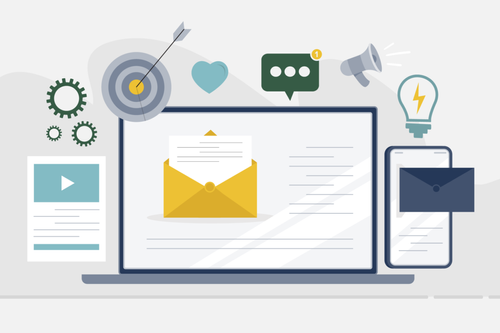In the digital marketing ecosystem, an email list is akin to a living organism, constantly evolving and changing. Understanding the lifespan of your email list is crucial, particularly the factors that contribute to subscriber drop-off. Identifying these factors is the first step in prolonging the health and efficacy of your email marketing efforts. Let’s explore what leads to subscriber drop-off and how to address these challenges.
1. Email Address Evolution – The Inevitable Change:
One of the primary reasons for subscriber drop-off is the natural evolution of email addresses. People often change their email addresses due to job transitions, personal preferences, or the closure of email providers. This natural churn leads to a decrease in active subscribers over time.
2. Content Misalignment – The Relevance Factor:
Content that fails to stay aligned with the evolving interests and needs of your audience can lead to disengagement. Subscribers may initially sign up for content that resonates with them, but over time, if the content becomes irrelevant or repetitive, they are more likely to unsubscribe.
3. Communication Overload – The Balancing Act:
The frequency of your emails plays a crucial role in subscriber retention. Too many emails can overwhelm subscribers, leading to fatigue and eventual unsubscription. Conversely, too few communications can lead to disinterest and detachment from the brand.
4. Poor Email Practices – The Deliverability Dilemma:
If your emails consistently land in spam folders or fail to reach subscribers due to poor email practices, your list will suffer. Factors like spammy content, lack of personalization, or technical issues with email formats can severely affect email deliverability.
5. Privacy Concerns and Trust Issues:
In an age where data breaches are commonplace, subscribers may leave your list due to privacy concerns. Lack of clarity in how you handle subscriber data or failure to comply with data protection regulations can erode trust and prompt subscribers to opt out.
6. Lack of Engagement – The Personal Touch:
Subscribers crave a personal connection in the digital space. A lack of personalized and interactive content can lead to a sense of disconnection, prompting subscribers to seek more engaging alternatives.
Strategies to Extend Email List Lifespan:
- Regularly Update and Cleanse Your List: Keep your list fresh and up-to-date by regularly removing outdated and inactive email addresses.
- Stay Relevant and Adaptive: Continually adapt your content strategy to meet the changing interests and needs of your audience.
- Find the Right Email Cadence: Tailor your email frequency to balance engagement without overwhelming your subscribers.
- Practice Good Email Hygiene: Focus on best practices in email marketing to improve deliverability and engagement.
- Ensure Data Privacy and Transparency: Be transparent about how you handle subscriber data and adhere to privacy laws.
- Personalize and Engage: Implement personalization strategies and interactive elements in your emails to foster a stronger connection with your audience.
Conclusion:
Understanding and addressing the factors leading to subscriber drop-off is key to maintaining a robust and dynamic email list. By implementing targeted strategies to prolong the lifespan of your list, you can ensure ongoing engagement and foster lasting relationships with your subscribers, thus driving the success of your email marketing campaigns.



